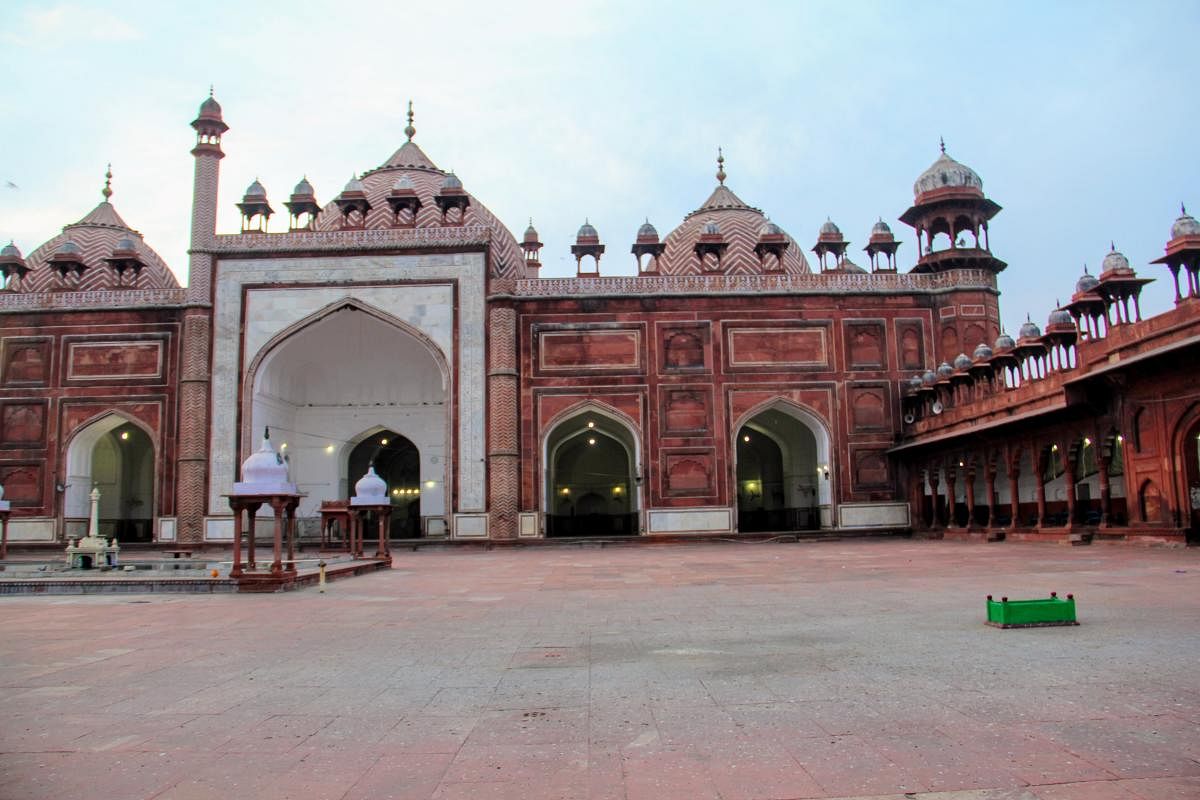
Handcarts selling fruits and vegetables, upper storeys of old havelis festooned with dangling electric wires, cows ambling in narrow streets, the sounds of temple bells seguing with the cacophony of horns, the aromas of spice intermingling with the flavours of puris and kachoris… My last trip before the Covid-19 lockdown was to a city where I had spent my early childhood and was nostalgic about — Agra, the city of the Taj Mahal. The city’s history spans centuries but there’s definitely more to the city!
I took a tour of old Agra, which was once the nucleus of a glorious city, the capital of the Mughal empire from 1565, for over a 100 years. Under emperors like Akbar and Shah Jahan, this little known town on the banks of the River Yamuna, became a buzzing trading centre for everything from indigo to silk. We started our heritage walk at the Jama Masjid, one of India’s oldest mosques built in 1648, by Emperor Shah Jahan, and dedicated to his daughter Jahanara. Built out of red sandstone inlaid with marble, and lotus-shaped domes, this has been restored many times down the ages. We ascended the steps to see young Muslim boys with prayer caps, play in the gargantuan courtyard, which can accommodate as many as 10,000 people.
We wound our way towards the entrance of the mosque, where on Daresi Road, stood one of the oldest puri stalls in the city, the 150-year-old Chimmanlal Poori Wale, which serves puris and piping hot aloo subzi at breakfast, lunch and dinner. Walking down narrow lanes with tea shops, shops selling cooling sherbets and sweet paan, we reached the Ayurvedic Doctor’s lane.
The Vaidya Gali — Agra’s Ayurvedic doctor alley is still lined with doctors operating out of small spaces, sitting on the floor, against walls lined with bottles and vials. “These old fashioned Ayurvedic doctors still feel your pulse, and diagnose your problems, and prescribe herbal concoctions and powders made out of healing herbs,” explained our guide, Virendra Gupta.
Close by was the festive Puja Wali Gali, selling religious paraphernalia. Surrounded by stalls selling flowers, and offerings, stood the ancient temple of Mankameshwar, which is dedicated to Lord Shiva who is the presiding deity of the city.
“Agra has four Shiva temples in four corners and this is the one that is the central and most important,” explained Gupta. Legend has it that Lord Shiva himself laid the silver covered linga here, when Lord Krishna was born in Mathura. People buy oil lamps and sweet pedha which are offered at the temple, which is underground. We made our way to the Rawat Para area, lined with old havelis, with exquisite facades and balconies. Rawat Para was once home to a Hindu community, which was granted land by Akbar, but under Aurangzeb, when they were forced to convert, many had to flee the locality, leaving their mansions behind. Over the years it became a market for grains, pulses and spices. Redolent with the smell of turmeric and chillies, it’s also famous for its shops selling the signature sweet of the city — the translucent petha made with just sugar, and fruit with added flavours.
Old havelis with carved entrance doors, as old as two hundred years, lined the narrow streets, with latticed balconies crafted in stone, metal and wood, some with motifs like the face of King George. There’s one haveli with pillars carved like people holding musical instruments. Many were decrepit, some were being restored slowly. As I emerged out of the old city, into a more manicured Agra, I felt like I had emerged from a time machine, one that took me into a tapestry of different religions and a glorious era of prosperity and riches.